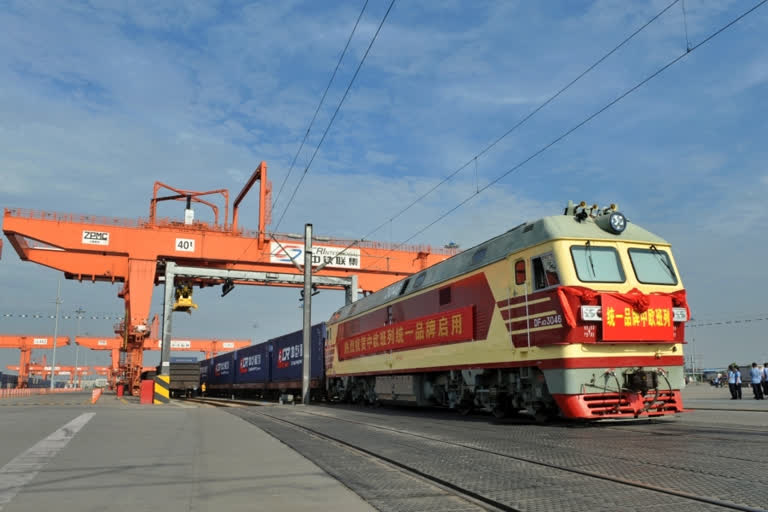New Delhi: On Friday when the world was still riveted on TV screens showing the widespread devastation wrought the day before by suicide terrorists at Kabul airport, a long red-brick coloured train engine with blue cargo wagons quietly snaked its way to the International Railway Port in Chengdu, capital of China's landlocked southwestern province of Sichuan.
The imagery may be quite ordinary but the significance was immense. For, China had opened a vital route to the Indian Ocean using the 'sea-land-rail' link, a development that is replete with strategic implications, more so for India.
Days ago, the ‘test’ cargo was loaded at Singapore which set sail by sea to Myanmar's Yangon port, from where, after traversing a good part of Myanmar by road, reached Lincang in China's Yunnan province, before setting off on direct rail to Chengdu.
Only two days back, on Wednesday (August 26), the rail link from Chengdu to Lincang had been inaugurated. Lincang is located just opposite the border town of Chin Shwe Haw, in Myanmar's Shan State. It will take just three days by train from Lincang to Chengdu.
As part of China's "Belt and Road Initiative" (BRI), Chin Shwe Haw is already one of the three Economic Cooperation Zones on the border agreed to between Myanmar and China.
Also read:China holds first FMs meeting with Pakistan, Nepal, Afghanistan on COVID-19, BRI
Beginning in 2013, China's flagship BRI project plans to set up a global network of roads, rail and shipping lanes to link at least 70 countries from China to Europe through Central Asia, West Asia and Russia to prop up trade and investment.
The new link has begun even as India has faltered on its "Act East Policy" (AEP) which is yet to take off after its earlier 'avatar' "Look East" was flagged off in 1991. Meant to offset China's growing strategic influence, the re-christened AEP seeks to build extensive economic and strategic ties with countries in Southeast Asia that are grouped under the Association of Southeast Asian Nations (ASEAN).
The new Myanmar-China route shortens the shipping time from Singapore to Chengdu by a good 20 days besides enabling Chinese exports to evade the narrow Malaccan Straits—thus overcoming the 'Malaccan Dilemma'—to carry out international trade directly from the Indian Ocean onwards with West Asia, Europe and the Atlantic region.
While western China gets access to the Indian Ocean for the first time, Myanmar's cash-strapped 'Tatamadaw' (the Junta) will be guaranteed a stable source of income.
Another major Chinese infrastructure project and also a part of the China-Myanmar Economic Corridor is the development of a deep seaport in Kyaukphyu in Rakhine. This will allow China's southwestern Yunnan province to access the seas.
Also read:BRI is hollowing countries out, say experts on India's refusal to back China's OBOR in SCO
Already a 770-km-long parallel oil and gas pipeline runs from Myanmar's Kyaukphyu island in the Bay of Bengal to Ruili in Yunnan province and later extends to Guangxi after a 2,800-km-long run.
While the pipelines carry 22 million tons of crude oil annually, the gas pipeline transports 12 billion cubic metres of gas. This network of pipelines carrying the much-needed energy sources is critically important for energy-deficient China as it makes the troubled Malacca Straits redundant.
